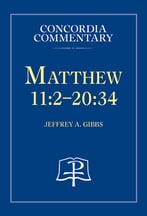An interesting phenomenon takes place at Halloween. Mom and Dad get dressed up in costume in anticipation of attending a party or taking the children trick-or-treating. Oftentimes their costumes include a mask or face paint. When the children first see Mom or Dad in the mask or face paint, they are often afraid, especially the younger ones. Mom and Dad have changed. They sound the same, and their height and general stature are unchanged. Yet the face, the point of connection between parent and child, has changed. Children cry out and cannot be consoled until Mom and Dad remove the mask and wash off the paint. At some point in growing up, children can suspend what appears to be reality, recognizing that it is still Mom and Dad under the disguise.
In this week’s reading from Matthew, Jesus is changed—transfigured, in fact. While the text doesn’t seem to suggest that Peter, James, and John were frightened like the children described above, it doesn’t seem that they fully understood the significance of Jesus’ alteration.
A Look at the Greek
We learn that Jesus is transfigured. The Greek for this is μετεμορφώθη. This is related to the English word metamorphosis. Even more significant is that this form of the verb is passive. Jesus is being acted upon by someone else. This suggests that His Father is present and active already. Certainly Jesus could have transfigured Himself, but the passive verb emphasizes that Jesus’ Father endorses what the Son is doing. In verse 3, Moses and Elijah appear. This verse includes the Greek word ἰδοὺ, meaning “behold.” This Greek particle is used to draw the reader’s attention. Something significant has happened or is about to happen. In this case, Moses and Elijah have appeared. After Moses and Elijah appear, we learn that they are talking with Jesus, expressed in the Greek, συλλαλοῦντες. What is important here is that the verb is present tense. One nuance of the present tense in Greek is the state of continuity. In other words, Jesus, Moses, and Elijah likely spoke for a period of time rather than sharing a mere greeting. The content of the discussion is not revealed here, but Luke tells us that Jesus’ departure was at least part of the conversation.
Matthew 17:1
Verse 1 reads,
And after six days Jesus took with him Peter and James, and John his brother, and led them up a high mountain by themselves.
Jesus had a special relationship with Peter, James, and John. They were present with our Lord at the most significant points in His ministry. As we learned from the text, the three were to keep this event a secret until Jesus was raised from the dead. No doubt after that event, the three did share this incident with the other apostles and beyond, but for now, Jesus wished to share this event only with those with whom He shares the most intimate connection.
Matthew 17:2
In verse 2, we learn,
And He was transfigured before them, and His face shone like the sun, and His clothes became white as light.
One of the reasons for the transfiguration was to glorify the Son. If Peter, James, and John didn’t realize who Jesus was by now, all doubt was to be banished. Daniel 7:9 serves to amplify our understanding:
As I looked, thrones were placed, and the Ancient of Days took His seat; His clothing was white as snow, and the hair of His head like pure wool; His throne was fiery flames; its wheels were burning fire.
It is unclear at this point whether the three understood why Jesus was transfigured. For the reader, the significance of His glorification is that we realize that God almighty, in the Son, went to the cross.
Matthew 17:4
Verse 4 notes,
And Peter said to Jesus, “Lord, it is good that we are here. If You wish, I will make three tents here, one for you and one for Moses and one for Elijah.”
On one hand, we can sympathize with Peter. He recognizes Moses and Elijah. Who wouldn’t want these two essential figures from the Old Testament to remain? Perhaps Peter is merely being curious. Nevertheless, it seems Peter doesn’t realize that by asking Jesus to remain, he is impeding what Jesus knows He must do—descend the mountain, enter Jerusalem, and fulfill His work of redemption on the cross.
Mathew 17:5
In verse 5, we hear the voice of the Father.
He was still speaking when, behold, a bright cloud overshadowed them, and a voice from the cloud said,
“This is My beloved Son, with whom I am well pleased; listen to Him.”
In case Jesus’ transfigured appearance and the arrival of Moses and Elijah weren’t enough, the Father endorses the Son and makes it clear that something significant is taking place. It is important to note that the Father expressed a similar sentiment at Jesus’ Baptism, the place where Jesus’ ministry began. Now we hear it again as Jesus nears the completion of His redemptive work.
Mathew 17:7
Perhaps the act most comforting for the reader is what we find in verse 7:
Jesus came and touched them, saying, “Rise, and have no fear.”
Recall that the angels expressed the same sentiment when telling the shepherds of Jesus’ birth. Also, the angel bade the same command to the women at the tomb following Jesus’ resurrection. There is no fear for Peter, James, and John because the transfigured Jesus is the Savior they have known for three years. There is no fear for those who trust in Christ because Jesus will descend the mountain, suffer death on the cross, and rise from the dead to bring forgiveness and everlasting life.
Scripture: ESV®.
More insights into the Greek, context, and historical thoughts on the transfiguration can be found in the Matthew 11:2-20:34 Concordia Commentary.

























